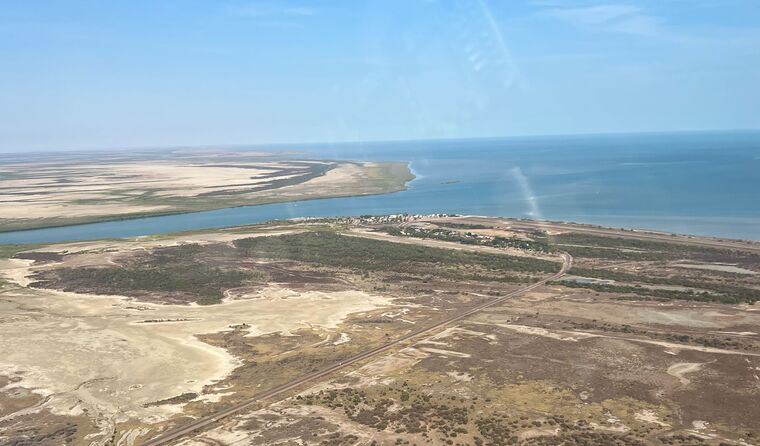News
Lack of remote healthcare proving deadly
Avoidable deaths and hospitalisations continue to soar in Australia’s remote areas, where people miss out on billions in healthcare funding.
 Potentially avoidable deaths and hospitalisations are up to three times higher in remote and very remote areas, according to the AIHW.
Potentially avoidable deaths and hospitalisations are up to three times higher in remote and very remote areas, according to the AIHW.
Drive nine hours west of Cairns or six hours north of Mount Isa and you will find the tiny town of Karumba, home to just 500 people.
Boasting croc tours, a few pubs and caravan parks, and a health centre, that’s where RACGP Rural Chair Associate Professor Michael Clements was working on Tuesday.
Some patients travel hundreds of kilometres to the clinic in search of medical care, but the distance means many others simply go without.
‘I’ve got a mix of patients where the idea of travelling to get an ultrasound, to get an x-ray or a CT scan is too great, so they’ll put up with their pain longer or just not investigate it,’ Associate Professor Clements told newsGP.
‘They’ll put up with it – their headaches, their chronic pain, their mental health.
‘They’re not getting the health dollar spent on them, they’re just not receiving the care, and they’re not accessing the same level of healthcare.’
Associate Professor Clements in not alone in his assessment.
According to the National Rural Health Alliance, those living in remote Australia are being burdened with an ‘appalling health spending deficit’, as postcodes continue to determine healthcare outcomes.
New health data from the Australian Institute of Health and Welfare (AIHW) recently revealed potentially avoidable deaths and hospitalisations are up to three times higher in remote and very remote areas, compared with major cities.
The number of non-hospital, non-referred attendances per person are also lowest in remote and very remote communities.
It is why the Alliance’s Chief Executive, Susi Tegen, is now pleading for urgent investment into rural health, especially in primary healthcare, MBS expenditure, and private hospitals.
‘The need for greater and more strategic investment in the health of rural Australians is urgently felt and must be addressed,’ she said.
‘We have a social and economic contract to do so.’

The tiny Queensland town of Karumba on the Gulf of Carpentaria is home to just 500 people. (Image: Michael Clements)
These access issues are also not limited to Australia’s northern regions.
Almost 3000 kilometres to the south, the regional New South Wales town of Jindabyne is almost as far from Karumba as you can get, but the problems are all too familiar.
Dr Vicki Mattiazzo is a local GP who also works for the Royal Flying Doctor Service, and has seen firsthand the impact a lack of healthcare options is having on the rural communities she visits.
‘I love rural medicine, it’s my joy. I love the relationships, I love the stories, I love knowing my patients, but I definitely see in practice the things the data is articulating,’ she told newsGP.
‘A lot of people are put off and a lot of people will say, “oh, I’m not even going to bother making an appointment because it’s six weeks away”, and they’re angry about that and so they put off healthcare.
‘It’s frustrating as a doctor because you’re not providing the best healthcare that you can.’
Associate Professor Clements said there is still a lack of the funding systems required to support remote and rural healthcare.
‘Our engagements with the state politicians tend to lead us to discussions where they blame the Federal Government and say, “well it’s a Federal problem to fix”, but in reality, it’s everybody’s problem,’ he said.
‘The reason why we haven’t fixed it yet is because it’s complex, because it does actually require state and federal governments to co-fund and work together.
‘We need to do better.’
That lack of funding comes despite the recently released Nous Report quantifying the rural health deficit at $6.55 billion annually, which equates to around $850 per person, per year.
It revealed the total burden has also risen to 244 disability-adjusted life years per 1000 population in remote and very remote areas.
While Dr Mattiazzo says there is no simple or easy solution to Australia’s rural healthcare crisis, an injection of resources and staff is desperately needed to keep everyone healthy, no matter their address.
‘We shouldn’t be having to tell people with non-acute illnesses to go to the hospital,’ she said.
‘That’s not an appropriate use of hospital services – but for people in a lot of places in rural Australia, that is their only option.
‘We need to be training more rural kids to take on roles in healthcare in their own communities.
‘I really strongly believe that in the future, it is all about increasing pathways for rural kids to have great access to have careers in rural health.’
Associate Professor Clements agrees, saying bold action is needed if anything is to change in some of Australia’s most remote communities.
‘We need to be brave with our funding models where each community has the option to do it, use the different funding sources, to do what’s best for them and what’s appropriate,’ he said.
‘We need a bit of bravery amongst the bureaucrats to try these different systems and at the moment, we don’t have a lot of that.’
Log in below to join the conversation.
general health rural rural generalism rural health
newsGP weekly poll
As a GP, do you use any resources or visit a healthcare professional to support your own mental health and wellbeing?